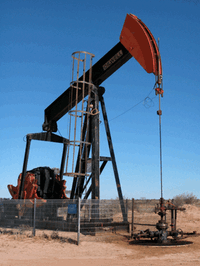This week marks the birth of the 2014 oil crash and a closer look suggests that things aren't as bad as some predicted.
What started as a slow decline in June 2014 accelerated into a full-blown crash throughout the fall. When prices finally bottomed out in March, they had dropped by more than half from over $105.00 to $48.00.
By last December, uncertainty fueled the news machines and cries of doom became commonplace. Some analysts predicted possible economic ruin for oil-dependent states and others warned of the crippling of the industry.
But many seasoned oilmen saw the downturn as a wake up call of sorts and an opportunity for producers to take a hard look at their systems, processes, personnel, technology and strategies outside of the frenetic pace the boom required.
Read more: Oil Bust Brings Opportunities
Cutting Costs: Over the last few month, producers have been forced to tighten their budgets and change their strategies in order to stay competitive. These tactics have worked well and first quarter results show many companies have been able to stay the course and gain strength by slashing costs associated with drilling through greater efficiencies and supplier reductions.
- Sanchez reported Q1 costs at 30 to 40% below fourth quarter 2014
- Matador reduced operating costs 30% to 40% for Q1
- Continental’s drilling and completion costs fell by 15%
- EOG announced it has benefitted greatly from the pull-back in activity and progress is being made to lowering cost in each phase of their operations
Innovation: Cutting edge producers are pushing the science and technology to new levels as they work to get the most out of their resources. These include advancements in 3-D seismic research, telemetry, remote guidance and innovations in CO2 or nitrogen-style completions.
“Oil production is becoming a modern manufacturing process. The frackers are engaged in ‘just-in-time’ production, analogous to the methods pioneered by Japanese manufacturers in the 1970s and 1980s, which led directly to hyper-efficient global supply-chain management perfected by Wal-Mart in the 1990s.”
Economic Impact: Thousands of jobs have been cut across all sectors of the industry, but both Texas and North Dakota report that the oil crisis has had minimal impact on their states. Data shows that Texas dipped in the first quarter but is already showing signs of a rebound and the North Dakota Department of Commerce boasts that the ND economy is still booming.
Dropping Rig Counts: The national and regional rig counts took a big hit this year as producers pulled rigs offline to save money. Many report that these wells are waiting in the wings and are ready to be put back into production later this year.
Record Production: Even in light of the price drop, production over the last 12 months has been at record levels. The EIA data published this month shows that global petroleum oversupply has more than doubled to 2.6 million bpd since the end of the second quarter last year and they expect the oversupply to last at least until 2017.




